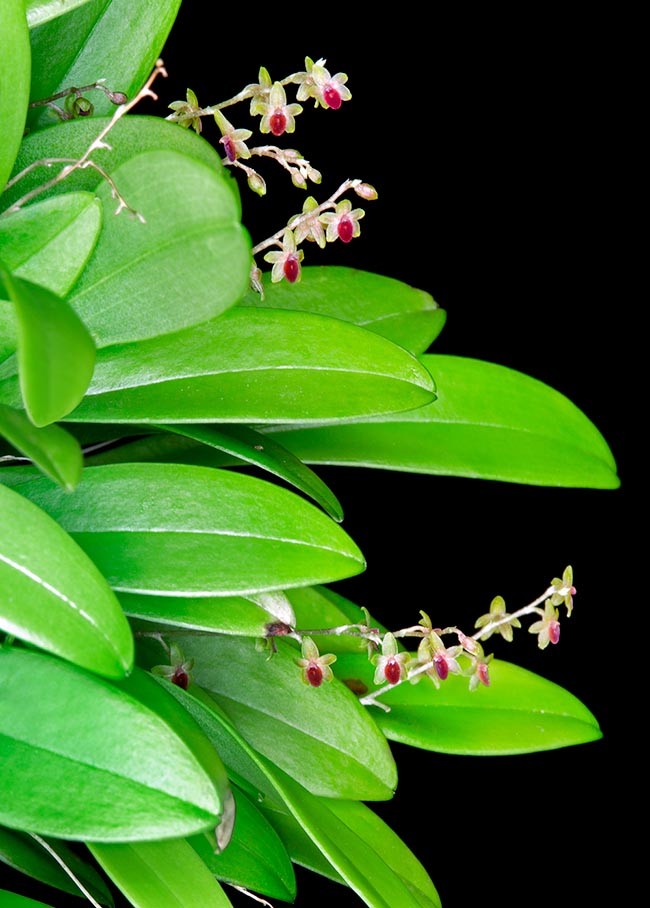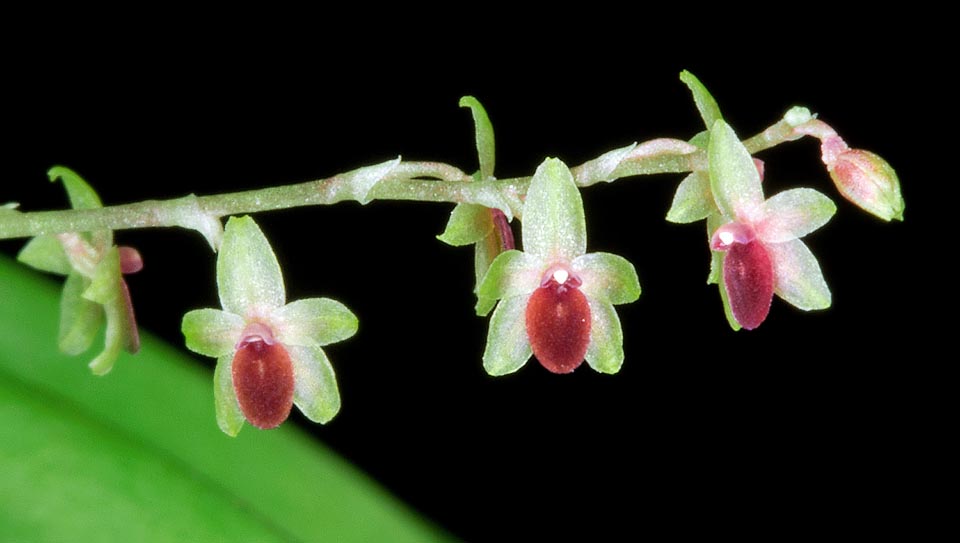Family : Orchidaceae

Text © Pietro Puccio

English translation by Mario Beltramini

The Platystele gyroglossa grows epiphyte in the humid Colombia and Ecuador forests at 600-1800 m of altitude © Giuseppe Mazza
The species is native to Colombia and Ecuador where it lives on the trees of the humid forests between 600 and 1800 m of altitude.
The name of the genus is the combination of the Greek adjective “πλατύς” (platys) = wide and of the substantive “στήλη” (stéle) = column, with reference to the column dilated above; the specific name is the combination of the Greek “γυρός” (gyrόs) = round and of the substantive “γλῶσσα” (glossa) = tongue, with reference to the shape of the labellum.
The Platystele gyroglossa Luer (1977) is a cespitose epiphyte species, with thin stems, about 1 cm long, covered by tubular sheaths with at the apex one single obovate-elliptic leaf, with acute to obtuse apex and thinned base, 6-8 cm long and 0,8-1,2 cm broad, coriaceous, of intense green colour.
Terminal racemose inflorescence, on a 4-5 cm long peduncle, erect, 5-6 cm long, bearing numerous flowers, of about 3 mm of diameter, opening at the same time in groups.
Oblong free sepals with obtuse apex, 1,5-2 mm long and 1-1,5 mm broad, of pale greenish yellow colour with pink shades, translucent, oblong free petals with obtuse apex, about 1,5 mm long and 1 mm broad, of the same colour as the sepals, sub-circular labellum, about 2 mm long and 1,5 mm broad, of brown red colour, and about 1 mm long column.
It reproduces by seed, in vitro, but usually by division with each section provided of at least 3-4 stems.
Mini orchid forming dense tufts, requires a semi-shady position, intermediate temperatures, high environmental humidity, 70-80 %, and constant movement of air. Ideal for terraria where it is possible to adjust properly all the environmental parametres.
It can be mounted on trunks, pieces of bark or rafts of cork or of roots of arborescent ferns covered by a layer of sphagnum to maintain the humidity on the roots, or cultivated in pots with draining compost formed by finely sliced bark fragments, charcoal and inerts with addition of sphagnum.

It forms dense tufts. Nice terminal inflorescences with small flowers of about 3 mm of diameter, opening at the same time in groups © Giuseppe Mazza
Watering must be regular in way to maintain the substratum permanently humid, but without stagnations that may cause rottenness, utilizing rainwater, de-mineralized or by reverse osmosis.
The species is inscribed in the appendix II of the CITES (species whose trade is internationally ruled).
Synonyms: Platystele porphyroglossa P.Ortiz (1981).
